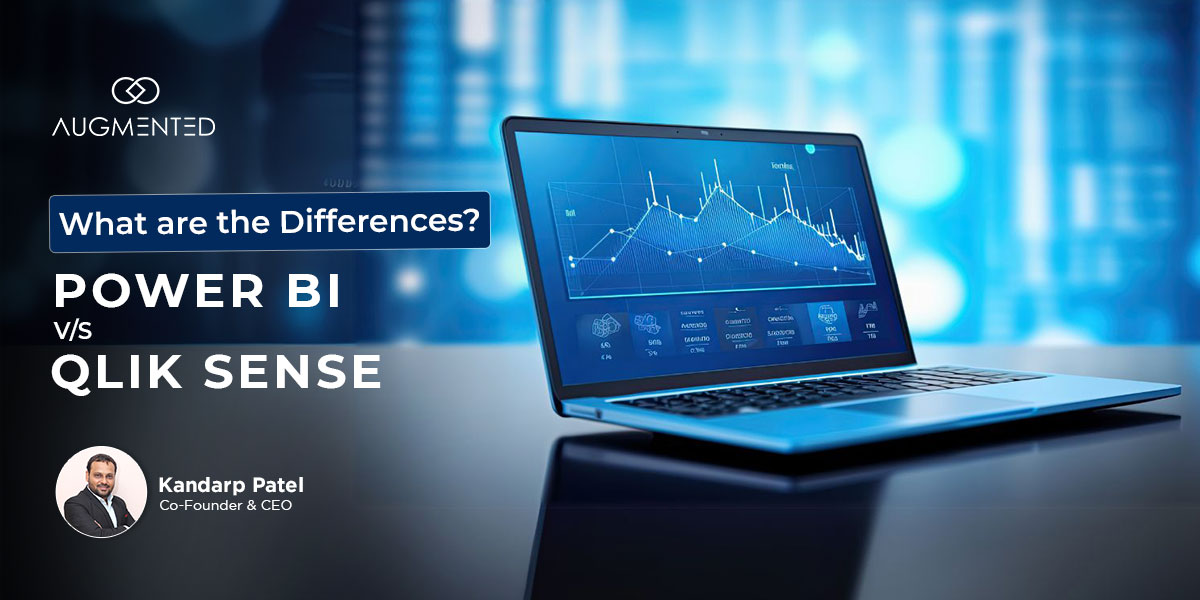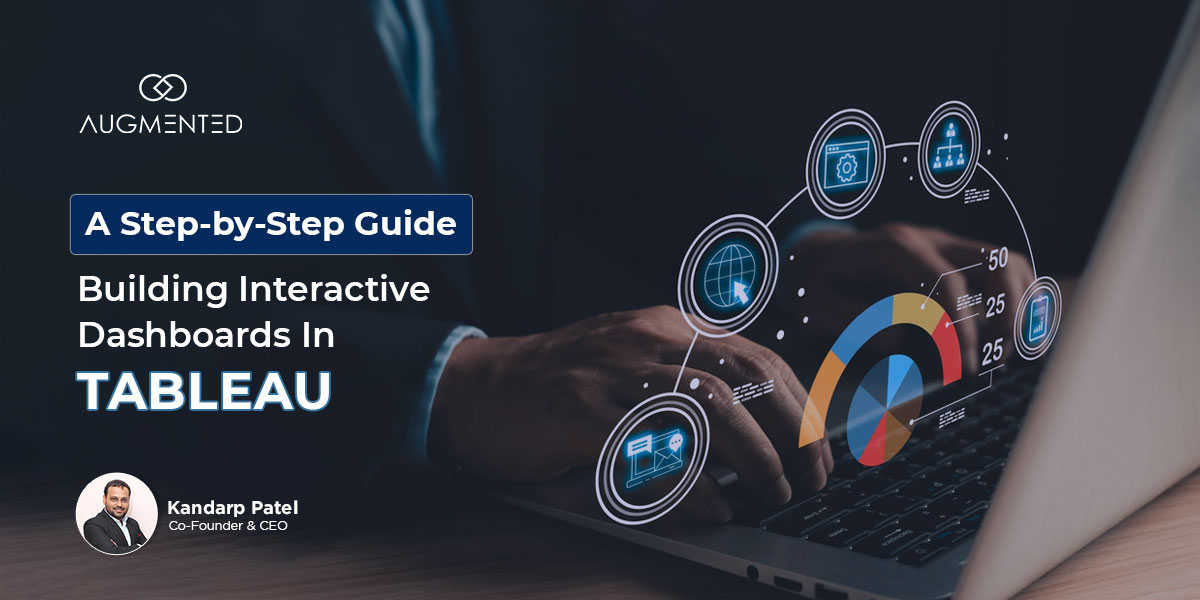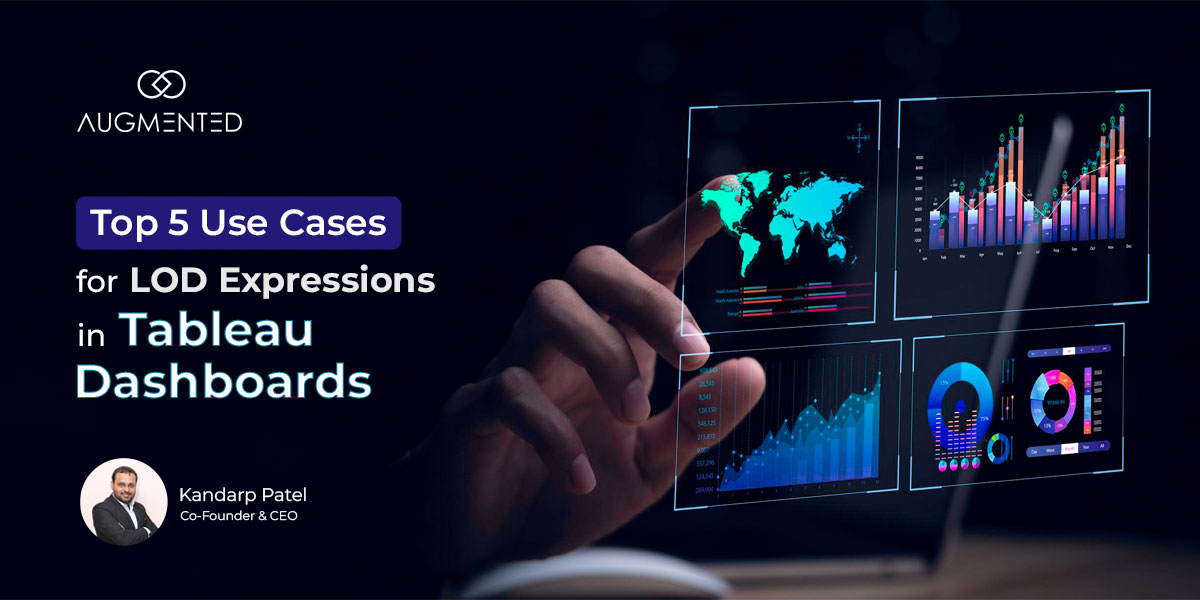I recently sat with a client during a strategy meeting.
While they were gearing up to upgrade their BI infrastructure, I realized something!
“Everyone knows of Power BI and Qlik.”
But
“Very few know which one will suit their business model the best!”
Some choose a business intelligence tool based on the brand, and others on guesswork.
You could spend months setting up your dashboard, and it could turn out to be the wrong platform simply because it isn’t the right fit for your business.
And I agree, it’s not an easy choice to make!
Both tools offer:
- Interactive dashboards
- Strong data visualization
- And some solid features
However, the way they work is completely different! Both platforms have strengths and weaknesses.
But the real question is, which one is right for your business?
And that’s exactly what I’m here to help you find out!
With this blog, I’m going to give you my honest review of the comparison between Power BI vs Qlik. We’ll explore where each platform performs best and how to match the right tool for your goals.
Let’s dive in!
Power BI vs Qlik: Table of Contents
- TLDR: Who’s the Best? Power BI or Qlik
- What is Power BI?
- What is Qlik?
- Power BI vs Qlik: Similarities and Differences
- Power BI vs Qlik: Who Wins?
- Power BI vs Qlik: FAQs
In a Hurry? See Who Wins: Power BI or Qlik
If you’re short on time, here’s a quick and honest look at Power BI vs Qlik Sense comparison. The two of the most popular and widely used business intelligence tools in 2025.
TL;DR: Power BI vs. Qlik Sense
Power BI: A great tool that offers seamless integration with Microsoft. Easy to get started with, cost-effective and user-friendly.
Qlik Sense: This one is best for associative data modeling and ideal for complex data exploration. Qlik also offers powerful automation but requires more technical expertise.
At Augmented Systems, we use big data visualization techniques to deliver scalable, high-quality and advanced business intelligence solutions tailored to your unique business needs.
Here’s a quick Power BI vs Qlik Sense comparison breakdown:
So, which one should you choose? At Augment, we won’t let you settle for just one. Rather, we bring the best of both worlds, and instead of picking sides, we focus on what works best for you.
Our vetted team brings out:
- Power BI’s ease of use and seamless Microsoft integrations
- Qlik Sense’s deep data analytics and dynamic capabilities
- Custom BI dashboards, workflows, and automation built to scale
- And expert support to help your team adopt, implement, and maximize both tools
With us, you won’t have to compromise. Instead, we help you build data solutions that fit your goals, not the other way around.
Okay, with that out of the way, here’s a detailed head-to-head comparison between Power BI and Qlik Sense.
What is Power BI?
Developed by Microsoft in 2025, Power BI is a dynamic business intelligence (BI) and data visualization platform. It helps you turn your raw data into meaningful and actionable insights.
What do I mean by that?
Power BI is a data visualization software that lets you connect, visualize, and analyze your data in real-time.
So, whether you’re tracking KPIs, forecasting sales, or monitoring your business performance, Power BI lets you use your data to get a complete picture of what’s happening in your business.
But, with so many powerful BI tools in the market, you’re probably wondering:
What Makes Power BI Stand Out?
Power BI stands out because it combines powerful analytics capabilities with the familiarities of Microsoft’s ecosystem.
Its real strength lies in its deep integration with Microsoft products, AI-driven insights, and a user-friendly drag-and-drop interface.
Plus, unlike many BI tools that need steep learning curves or depend heavily on IT teams, Power BI gives you complete control to build reports, visualize your data, and uncover insights (even if you’re not a data expert).
In simple terms, you can pull data from various sources, such as:
- Excel
- SQL Server
- SharePoint
- Salesforce
- Google Analytics
And visualize complex data through beautiful dashboards with just a few clicks in just a few minutes.
For example, you want to track your sales team’s performance across different regions.
So, using Power BI dashboard development, you can:
- Connect to your CRM, Excel tracker, and cloud database
- Combine your data using Power Query
- Build a dashboard that visualizes KPIs, like monthly sales, revenue by rep, and more
- Set automatic refresh schedules so your dashboard is always up to date
- Share it with your leadership team in Teams, with role-based access to control
And because it’s part of the Microsoft ecosystem, Power BI plays really well with tools like Excel, Teams and Azure. That means it makes collaborations and data analytics seamless for your data and business.
Key Power BI Features + Pros and Cons You Should Know in 2025
At first glance, Power BI might look like just another player in the crowd. But once you start exploring it and using it, you’ll realize that it deserves more than just a passing glance.
It’s a high-performance platform packed with features that give you complete control over your data, regardless of your technical background.
And if you ask me, these aren’t just flashy add-ons. These are core features that simplify your work and help you make smarter decisions faster.
But before you commit to any BI solution, it’s worth taking a clear, objective look at its capabilities, features, pros, and cons.
What are the Power BI Features?
1. Data Connectivity
You can connect 100+ data sources, whether your data is in the cloud, on-premise or across hybrid environments.
2. AI-Powered Analytics
With Microsoft’s AI built-in capabilities, you can automatically detect patterns, forecast future trends, and get intelligent suggestions.
3. Drag-and-Drop Reports
You don’t need to write code to build reports. Simply drag a field on your canvas, choose your visualizations, and create dashboards tailored to your business needs. Plus, it automatically generates written summaries of your dashboards.
4. Real-time Dashboards
You can monitor real-time data streams and make faster decisions based on up-to-the-minute insights. You can also track your business objectives and progress directly into Power BI.
5. Data Modeling with DAX
Using DAX (Data Analysis Expressions), you can design custom measures, calculate columns, and create relationships across multiple tables.
6. Integration with Excel and Azure
Without switching platforms, you can reuse your existing Excel data models, connect directly with Azure services, and collaborate across your Microsoft ecosystem. You can also bring machine learning models directly into your reports.
7. Natural Language Query
No more digging through filters and menus. Just type a question like “What were the total sales by product in April?” and Power BI will instantly create a visual answer to your query!
8. Row-Level Security
With row-level security, you can define who sees what. Define user roles and restrict data access down to the most granular level, making sure that the right person sees the right information at the right time.
9. Power Query and Power Pivot
With Power Query, you can clean, transform, and shape your data before analysis. Plus, it also allows data modeling and DAX-based calculations with the Power Pivot feature.
What are the Power BI Advantages?
- User-friendly and intuitive dashboard interface
- Affordable pricing, especially the free version and Pro tier
- Excellent integration with Microsoft 365 and Azure services
- Strong community support
- Regular updates
- AI-powered features for deeper insights
- Ability to share reports securely within and outside your organization
- Self-service analytics
- Scalable
- Mobile Accessibility
- Easily share reports or publish to the web securely
- Cloud-powered
What are the Power BI Disadvantages?
- Steep learning curve
- Limited export options, like PDF or PowerPoint
- Premium pricing to unlock advanced features, like AI visuals and paginated reports
- Performance bottlenecks, especially when working with large or complex datasets
If you ask me, the Power BI advantages and unique features make it a powerful choice for businesses looking for flexible, cost-effective, and scalable BI solutions.
Plus, you get the power to move and manage your data without relying on IT or data scientists for every report!
Up Next: let’s have a look at what Qlik can bring to the table for your business.
What is Qlik?
Qlik or Qlik Sense is a modern business intelligence (BI) and data analytics platform that helps you understand your data and not just report it.
So, whether you are trying to identify why your sales dipped last month or spot growth opportunities across different product lines, Qlik helps you explore your data in a way that feels natural and intuitive.
In simple terms, Qlik helps you ask better questions and get smarter answers.
Plus, it is built for self-service. That means you don’t need to be an analyst or coder to create interactive dashboards, generate reports, or analyze complex data sets.
With Qlik, you can explore your data on your own terms.
What Makes Qlik Stand Out?
One word: Associative Engine.
Unlike traditional BI tools that rely on predefined engines and rigid hierarchies, Qlik uses a unique associative model that lets you explore your data freely.
That means you are not limited to what someone else thinks you’d need to ask or boxed into someone else’s logic.
You can click, filter, and pivot your data in any direction you want and uncover insights that would otherwise be hidden.
So, with Qlik, you can:
- Explore different combinations of data
- Never miss a developing or hidden trend
- Get actionable insights and feedback
- Follow associative logic
One thing that stands out to me is that Qlik is leading the charge of integrating artificial intelligence into its core functions. Its AI-powered Insight Advisor does more than just surface your data. It suggests the best charts, highlights key drivers and trends, and even auto-generates dashboards.
In short, Qlik helps you not just report on what happened but also understand why it happened and what you can do next.
Key Qlik Features + Pros and Cons You Should Know in 2025
Most Power BI tools expect you to follow the same straight path.
Define the question -> Run the query -> Wait for the answer.
Qlik flips the script. It’s built for users who don’t always know the right question upfront.
How? Let’s take a closer look at Qlik. What it does well, where it shines, and what you should keep in mind before diving into it.
What are the Qlik Features?
1. Associative Data Model
You can explore data without being restricted to a single path. That means Qlik’s engine shows you both selected and unselected data so that you can uncover insights that other tools might miss.
2. Insight Advisor (AI-Powered Analytics)
It uses AI to recommend charts, uncover patterns, and even auto-generate dashboards for you. You just have to type a question, and it will deliver answers, complete with explanations and visualizations.
3. Self-Service Visualizations
You won’t have to worry about writing SQL or depend on your IT teams with Qlik, as it's built with interactive dashboards with drag-and-drop ease.
4. Augmented Analytics
AI and ML (Machine learning) work in the background to help you spot trends and analogies. It alerts you even for the ones you weren't actively looking for.
5. Advanced-Data Preparation
With built-in ETL capabilities, you can clean, transform, and load your data all within Qlik. That means you won’t have to worry about jumping between different tools or platforms.
6. Multi-Cloud and On-Premise Deployment
Qlik Sense supports all platforms. So, whether you want to host your analytics on the cloud, in a hybrid setup, or completely on-premise, you have the freedom to do it.
7. Embedded Analytics
You can embed dashboards and visualizations into your web apps, portals and internal systems. Thus, Qlik gives your users insights right where they work.
8. Strong Data Governance
Define rules, roles, and access levels across your organization with complete control over data lineage and security.
What are the Qlik Sense Advantages?
- Free data exploration
- AI-driven insights with Qlik’s Insight Advisor
- Scales across teams and data sizes
- Flexible deployment, giving you the freedom to choose what fits your infrastructure
- Strong community and resources, such as tutorials, forums, and templates
- Regular updates and new features
What are the Qlik Sense Disadvantages?
- Can be complex for beginners or new users
- Higher pricing, thus not suitable for all business types
- For advanced analytics, you might need scripting knowledge
Bottom line? If you’re looking for a tool that lets you think outside the traditional “Query box,” Qlik Sense is a strong contender. Qlik Sense advantages, such as deep AI features and unmatched data exploration capabilities, make it fast, intelligent and flexible.
Power BI vs Qlik: Similarities and Differences
That said, Qlik and Power BI are two of the most powerful BI tools or data visualization software currently on the market.
And while they both help you turn your raw data into business decisions, how they get you there is where things get interesting!
Each platform has its own strengths and weaknesses. Simply put, what may work perfectly for someone else might not be the right tool for you.
So, if you are wondering, "Which one should I go for?”
Let’s have a look at a clear-cut side-by-side comparison and see how exactly Qlik and Power BI stack up!
So, before we jump into what makes Power BI and Qlik Sense different, let’s take a moment at what they have in common.
Here’s what both these top-tier business intelligence tools have in common:
With these shared strengths, both tools support flexible data exploration, powerful visualizations, and easy collaborations for you and your teams.
Now, here’s where Power BI and Qlik Sense start to differentiate:
So, after this in-depth comparison, I think it’s clear that both Power BI and Qlik are suitable for different use cases.
Power BI vs Qlik: Who Wins?
The business intelligence software market is booming. And the numbers prove it!
In 2025 alone, the global software market is projected to generate $29.51 billion in revenue.
With a compound annual growth rate (CAGR) of 5.35% from 2025 to 2029, it’s expected to reach $36.36 billion by the end of the decade.
So, what does this mean for you?
It tells you one thing: businesses are investing more and more in smarter, faster ways to work with their data. And choosing the right data visualization software or a business intelligence tool is a big part of it.
When it comes to Power BI or Qlik Sense, there is no right or wrong option! Your decision should depend on:
- The complexity of your data
- Your team’s technical skill level
- Integration needs of your project
- The overall budget
- And, of course, your long-term analytical goals
If you ask me, both platforms are strong contenders.
Power BI wins with its ease of use, cost-effectiveness and Microsoft ecosystem.
Qlik shines when it comes to flexibility and associative data exploration.
So, really, it’s less about which tool is “better” and more about which one fits your requirements.
And if neither tool feels like a perfect match, that’s okay, too!
There’s a whole landscape of data visualization and BI tools out there. Exploring your options would be the smartest first step!
And if you’re not sure how to take that first step, connect with us at Augmented Systems.
Our experts provide comprehensive solutions by combining the best features of different tools.
So, why not connect with us for a commitment-free consultation and start your journey toward seamless data visualizations?
Power BI vs Qlik: FAQs
1. Why is Business Intelligence helpful for your business?
Business intelligence tools turn raw data into actionable insights. That means these tools, like Power BI and Qlik, help you make smarter decisions, spot trends, improve efficiency and stay ahead of the competition.
2. How does Power BI help businesses?
Power BI simplifies data analysis with its easy-to-use dashboards, real-time insights, and seamless integrations with Microsoft tools like Excel and Azure.
3. Is Power BI in demand?
Yes. Power BI is one of the most in-demand BI tools around the globe because of its cost-effectiveness, user-friendly features, and integration with Microsoft 365. It’s a top choice for businesses of all sizes, especially in fast-growing markets like India, the US and Europe.
4. What language is Qlik?
Qlik uses its own scripting language for data transformation and modeling. It also supports expressions using Qlik’s syntax and functions, and integrations with languages like SQL, Python, and R for advanced use cases.
5. Can both Power BI and Qlik handle large datasets?
Qlik is known for its in-memory associative engine, which allows fast, flexible analysis across massive datasets. Power BI can manage large datasets, especially with Premium capabilities and the use of tools like DirectQuery or aggregations.




